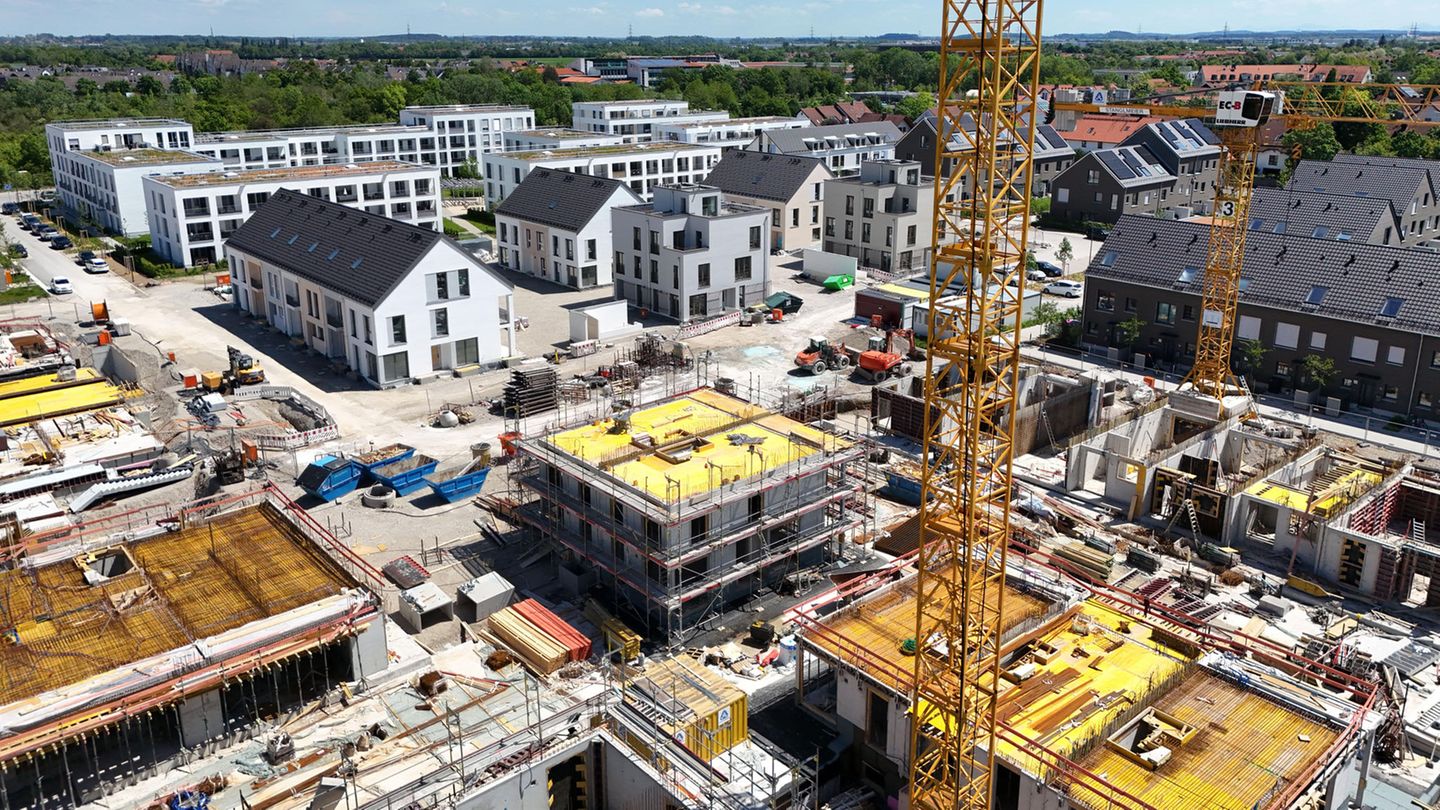analysis
In 2023, 294,400 housing units were built. That is too few and yet surprisingly many. The housing construction figures classified: from single-family homes to social housing.

This is original Capital branded content. This article is available for ten days on stern.de. You will then find it again exclusively on capital.de. Capital belongs like that star to RTL Germany.
0.3 percent, that is the first number that appears in the 2023 housing construction figures. The number of completed apartments fell by 0.3 percent. Sounds bad at first. Is that really it? Five insights behind the numbers:
1. Things went better than expected
Last year, the construction associations suspected a “disaster in construction”. The number of new buildings would fall below the 250,000 completed housing mark, almost “rushing down”. Well, things turned out differently. The numbers remain almost unchanged, 294,400 housing units were built in 2023. That’s pretty good – at least considering the situation the construction industry was in last year. The high interest rates and high material prices caused many companies to groan, and hardly anyone would have expected that the same number of apartments would be built as in the previous year. (And still more apartments than in most years since 2000.)
2. It still went worse than it should have
Of course it’s still not enough. Not only did the federal government target 400,000 new apartments per year in the coalition agreement, but this mark was always too low compared to the actual need. According to a calculation by the Pestel Institute for the tenants’ association, Caritas and the construction union, 800,000 apartments are missing.
3. The funding of the past was rubbish
One reason why many had expected worse figures for 2023 is the expiration of state subsidies. Both the child building allowance and the subsidy for houses with energy standard 55 were discontinued in January 2023. The fact that the figures remained the same nevertheless suggests that the subsidies of the past few years were wasted: the apartments that were created with them would probably have been built even without state money.
4. There is a change from a single-family home to an apartment
Now it is unmistakable that the costs for a new building have risen sharply. This is reflected less in the total number of completions and more in the breakdown of which types of housing were built. The high costs apparently deterred families in particular who wanted to build a house. (The abolition of building allowances also had the greatest impact there.) 7,200 fewer single-family homes were built than in the previous year, or 9.3 percent. In apartment buildings, however, 4.1 percent more More apartments were built than in the previous year, with a total of 156,300 new apartments. The number of completed residential units in two-family houses also rose by 3.8 percent.
5. There is a trend reversal in social housing, even if the number continues to decline
There are ambiguous signals in social housing: the number of social housing units has fallen by 14,082, which is due to the fact that more units are being released from the contract than new ones are being added. Nevertheless, the number of newly built subsidized housing units rose by around 8,400 units. A total of 49,430 social housing units were built in 2023. The decline is therefore lower than it has ever been in the last 15 years. In some federal states, the number of social housing units is now even increasing, this is particularly noticeable in Saxony-Anhalt with an increase of 12.66 percent.
Source: Stern




